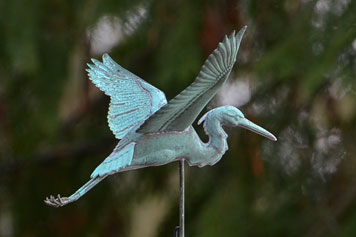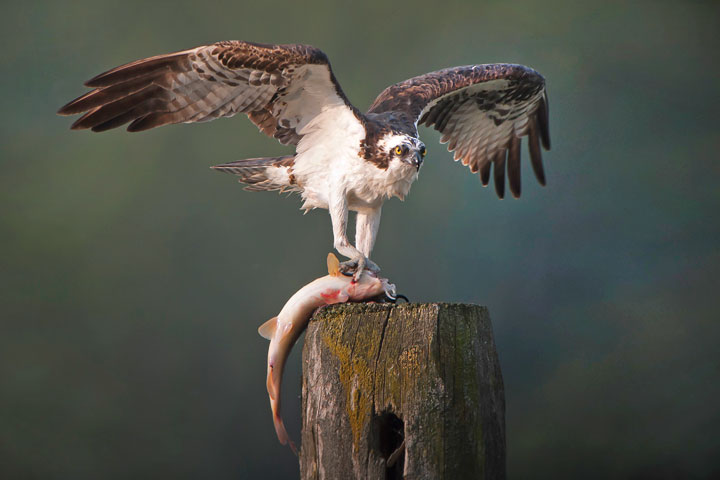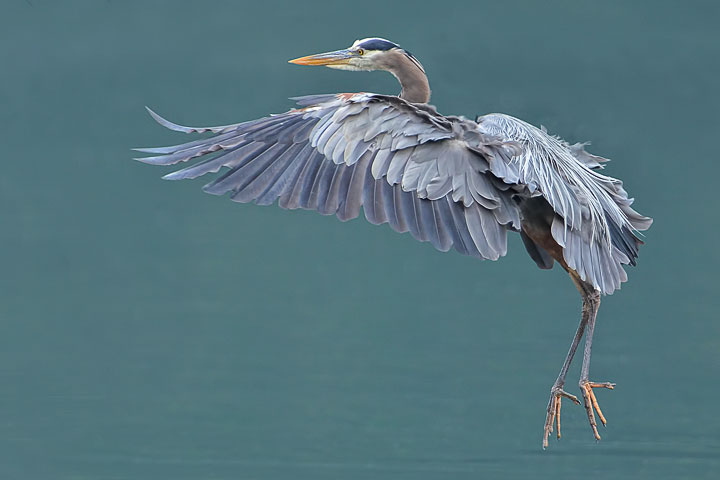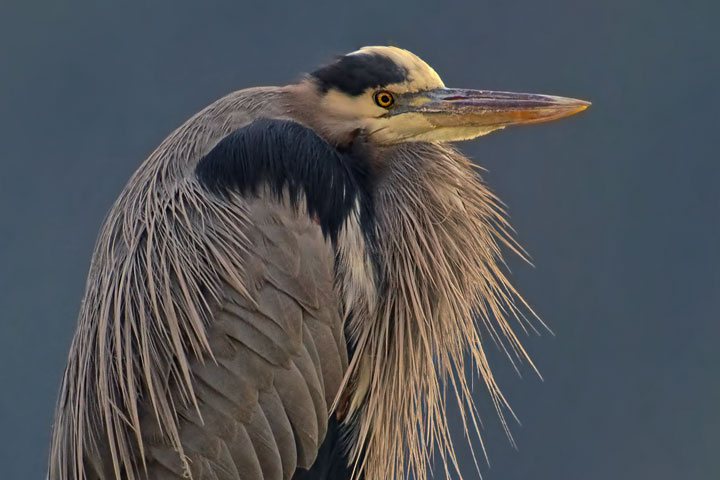A news story surfaced this last summer about Nelson’s acquisition of a heron sculpture by Jock Hildebrand, an illustration of which appears on his website. When installed, it will join Nelson’s osprey sculpture and a heron atop a weathervane in Procter.

Procter already has its own heron sculpture atop a weathervane.
A recent article in the Nelson Post discusses the quest to pick a location for Hildebrand’s heron. A comment to this story, prompted me to think about the matter of birds as local icons. Claus wrote of “Denis Kleine’s realistic osprey in a nest on top of a wooden post [in Duck Bay]” and notes that “this in the osprey’s natural environment. While the osprey is iconic here—the heron is not!”
There is a good deal of truth in what Claus says: the osprey is iconic here while the heron is not. This made me wonder why that might be. Notice, he didn’t say the one was more common than the other, but that people have chosen the osprey as representative of the region. Why should they have done so? Why do we have such things as the Osprey 2000 (the Main Lake ferry), and the Osprey Foundation (a philanthropic organisation). Why don’t we have, say, a Heron Foundation?
The two birds share many characteristics: both are large, common, eat fish, and are frequently seen flying over the Lake or sitting atop pilings. However, there are differences that probably contribute to one having become an icon while the other did not.
Consider:
- The heron is common and seen here year round;
- The osprey is also common, but only seen in the summertime (roughly May to September);
- The osprey will attack the heron and this prompts the heron to be more secretive in the summertime;
- People flock to beaches in the summer and so become familiar with the highly visible osprey but not the seasonally somewhat less visible heron.
- During the rest of the year, the heron is easily seen, but people are absent from beaches.
- People are the ones who choose icons.
My suspicion is that the osprey became a regional icon largely as a consequence of our summertime enjoyment of beaches and boating when it is the more visible of the two birds. For the rest of the year when the heron frequents the lakeshore, people do not.
Actually, I am a great fan of each of these birds. Indeed, the Kootenay Lake website has a page devoted to pictures and a discussion of both the osprey and the heron. Further, I do find it appropriate to have sculptures of each in Nelson.
These musings suggest that we have chosen this icon more as a consequence of our own behaviour than that of either common bird. To round out this thought, I attach a favourite shot of each. To these, I added last Friday’s picture of a heron, merely to underscore just how common this bird is around here (and it also hung around for over an hour this afternoon).
I have taken hundreds of pictures of our ospreys, but this one with its wings outstretched while holding a sucker is my favourite.

I have photographed our herons on pilings, in trees, and while wading. It is less often that I manage a close shot of one in flight—but, this one was satisfying.

This was the second heron I watched last week. It stopped on a piling and watched for fish. The heron is one very photogenic bird.


If I may comment on this using my responses from my flickr website as an example. I have found in the last year that I have been putting my pictures on flickr that Owls or raptors of any kind get a much higher viewing rate than all other species combined. it would have to be a very exceptional picture of any species to get the response rate close to that. I think I have even seen that in other photographers that shot exceptional pictures of any species, that their Hawk and Owl pictures get much more viewer time than all the rest.
Reid, yours is a useful insight: the public just likes raptors. How many school sports teams are called the Chickadees?
Interesting thoughts, Alistair–and as always, stunning images. I wonder, too, whether the preference for Ospreys doesn’t have something to do with their conservation history and an aura of scarcity that still attends the species even a couple of decades after its recovery.
Merry Christmas from the East Coast!
rick
Rick, Good to hear from you again after all this time; I always appreciate your insights. Indeed, I hadn’t even considered the differences in the conservationist’s histories of osprey and heron. It probably did influenced public consciousness, after all, the public does rally to causes. However, implying that this has proven important also credits the public with a rather long memory for the subtleties of birds. Yet, maybe that really has influenced sensibilities.
Pingback: Some thoughts on herons and osprey | Nelson BC News : The Nelson Post
We had a lovely little fish pond when we lived near Nelson, and the herons cleaned it out. Maybe that’s why people don’t like them as much.